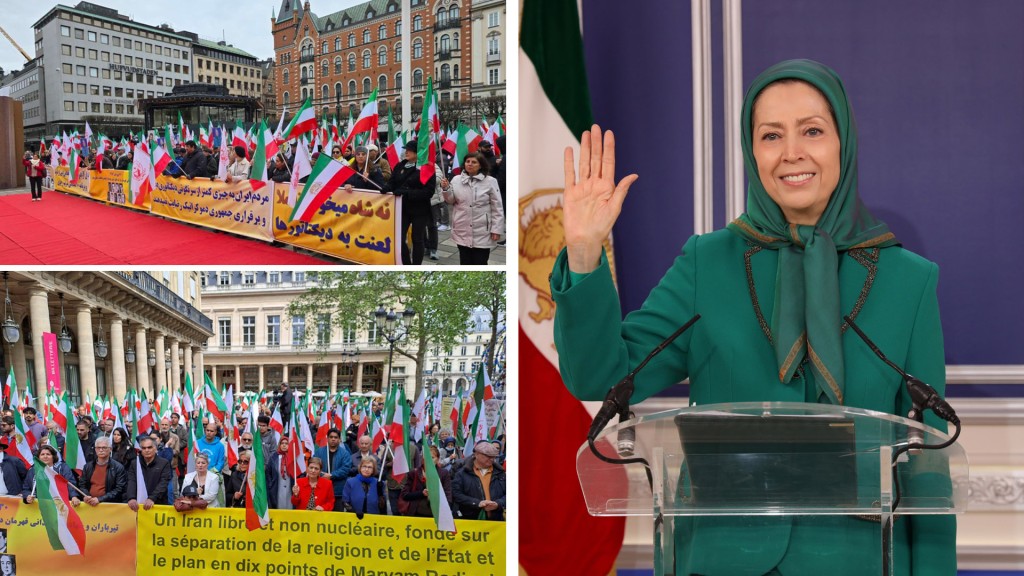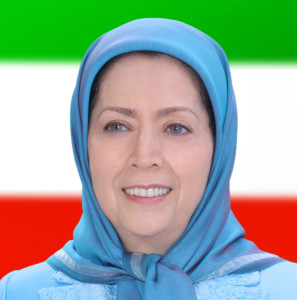Message to the Demonstration of Iranians Commemorating the Fallen Heroes of April 19, 1972, and 1975

Maryam Rajavi: No to the Shah, no to the Mullahs — Victory to the Democratic Revolution of the Iranian People
Fellow compatriots,
Rebellious friends and supporters of the Iranian Resistance,
I salute your passionate gatherings across various countries, held in honor of the fallen heroes of the highest stature and worth.
On the anniversary of the martyrdom of four members of the central leadership of the People’s Mojahedin Organization of Iran in 1972, and the anniversary of the horrific crime of the Shah’s SAVAK in 1975—when nine Mojahedin and Fedayeen, hands tied, were executed by firing squad on the hills of Evin—we renew our pledge to fulfill the ideals for which they gave their lives:
No to the Shah, no to the Mullahs — Victory to the Democratic Revolution of the Iranian People!
The Atrocity of SAVAK and the Shah’s Regime
The massacre of nine revolutionary Fedayeen and PMOI members was among the most disgraceful crimes committed by SAVAK and the Shah’s regime.
At the time, the Shah had amassed billions of dollars in windfall revenues from the plunder of Iran’s oil. By establishing the Rastakhiz Party and enforcing a one-party system, he had pushed repression and brutality to their extreme. Yet the nightmare of revolutionaries like the PMOI and the Fedayeen continued to haunt him.
Thus, he turned to spilling the blood of imprisoned leaders and vanguards. But he failed to realize that, in doing so, he was drowning his regime in a sea of blood.
This brutal crime was carried out on the orders of the treacherous Shah and orchestrated by the chief executioner, Parviz Sabeti—the surviving Political Director of the Shah’s Secret Police.
Indeed, nothing represents the regimes of both the Shah and the mullahs more clearly than these very executioners do.
Salutations to the brave heroes whose blood was shed on the hills of Evin: Two PMOI members, Kazem Zul-Anvar and Mostafa Javan Khoshdel, and seven Fedayeen-e Khalq revolutionaries: Hassan Zia-Zarifi, Abbas Souraki, Mashouf Kalantari, Mohammad Choopanzadeh, Aziz Sarmadi, Ahmad Jalil Afshar, and the great revolutionary Bijan Jazani.
Endless salutations to Commander Kazem Zul-Anvar, who, with courage, self-sacrifice, and sharp foresight, thwarted SAVAK’s attempts to uncover Massoud’s role in leading the organization within the prison and its activities, while also shielding Massoud Rajavi from SAVAK’s criminal conspiracy.
And greetings to Mostafa Javan Khoshdel, the hero of unyielding resilience under torture, a symbol of salvation and emancipation among the revolutionaries of Iran.
Salutations to all of them!
And salutations to the martyrs of April 19, 1972:
Nasser Sadegh, who, in the Shah’s military court, cried out: “We see the bow of the ship of victory on the horizon of the peoples’ ocean!”
Ali Bakeri, who was a symbol of revolutionary ethics, sense of responsibility, sacrifice, and humility.
Mohammad Bazargani, who encapsulated the story of the uprising of the people, by stating: “When we turn the pages of Iranian history, we find no period where our people sat idly by while demanding their rights.”
Moreover, Ali Mihandoust said, “We have come to know that the movement demands countless sacrifices, and we are ready to be among its first martyrs.”
We do not forget that in 1980, during the ceremony honoring these very martyrs, Massoud said: “Is walking on the path of monotheism, on the path of God and the people, a simple matter, a matter of mere claims? No! It is with the heart, with the soul, and with the very bones!”
Indeed, it was with heart, soul, and the very marrow of their bones that the Mojahedin tore through the walls of censorship and repression in the Shah’s military courts, and made the cries of an oppressed nation heard by all.
As Moussa Khiyabani said, “Nasser Sadegh, Mohammad Bazargani, Ali Mihandoust, and Massoud turned the courtroom of injustice into a trial of the traitorous Shah’s regime.”
In their passionate courtroom defenses, they expounded on the revolutionary and anti-exploitative essence of Islam’s ideology.
It was from that moment that the downfall of the Shah’s regime was set in motion.
As Father Talaghani said, “Torrent rose from their blood—floods of rebellion and revolution.”
It is still the surge of this pure blood that today prevents the distortion of the boundary between the people’s front and the anti-people’s front, between the movement and its opposition. It blocks the path to empty, deceitful slogans and the whitewashing of past atrocities.
Indeed, the countless crimes of Khomeini and Khamenei have not and will never be able to erase the bloodshed and atrocities of the Pahlavi dictatorship from memory.
As Massoud said, “Khomeini was the Shah’s true heir.”
Indeed, the people of Iran are determined to establish, through a democratic revolution, a society in which there will be no place left for the Shah, Khomeini, and their inhumane tyranny. And so, it shall be.
No Returning to the Past, No Stagnation in the Present
Dear fellow compatriots,
The anniversary of these blood-drenched events, like other great epic moments and battles against the Shah and Mullahs’ regimes, marks some of the shining milestones of the Iranian people’s 120-year-long resistance for freedom.
This 60-year-long struggle, marked by the suffering and blood of the finest children of this land, stands as the greatest asset in contemporary Iranian history, embodying the battle between freedom on one side and tyranny and regression on the other.
With all the blood shed during the dark years of monarchy and theocratic rule, neither a return to the past nor stagnation in the present is conceivable.
The Iranian society and its vanguards are marching toward a glorious future based on freedom, equality, and democracy, and they will pay whatever price it takes to achieve it.
The people of Iran will accept nothing less than the overthrow of the religious dictatorship and the establishment of a democratic republic: a free, non-nuclear Iran with the separation of religion from the state, and the 10-point plan of the Iranian Resistance.
Long live freedom, hail to the martyrs.
Victory is yours!
- Tags: Maryam Rajavi, mullahs' regime, NCRI, people of Iran

